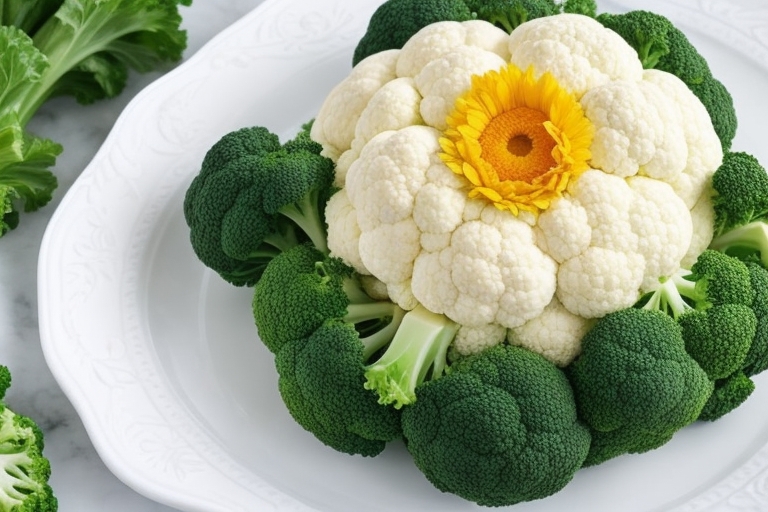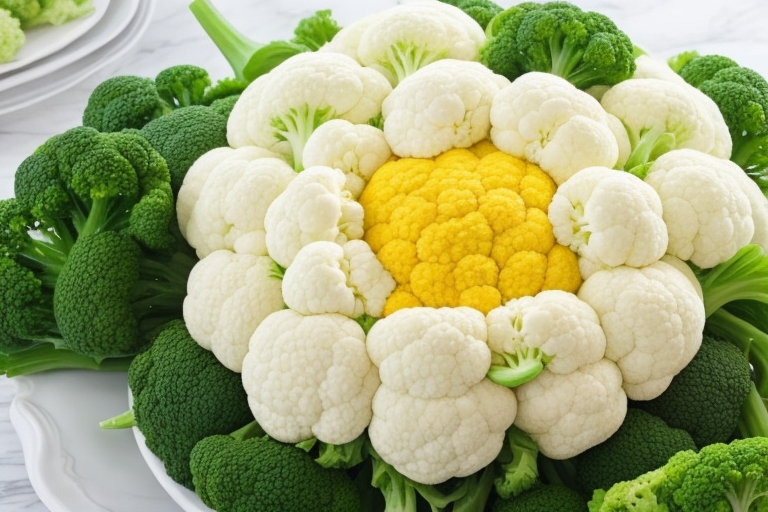Have you ever found yourself standing in your garden, staring at your cauliflower plants, and wondering whether it’s the right time to harvest them? I’ve been there, and let me tell you, it’s a mix of anticipation and anxiety that can only be quelled by knowledge and experience. Cauliflower, with its tight, creamy heads nestled among large green leaves, can be somewhat enigmatic when it comes to deciding on the perfect time to pick. This article isn’t just about giving you a set of instructions (When & How to Harvest Cauliflower)—it’s about sharing a journey, from seed to harvest, and ensuring your cauliflower is as delicious as can be.
When to Harvest Cauliflower
Cauliflower is not just another crop in your garden; it’s a test of patience and attentiveness. The journey begins the moment those seeds are nestled into the soil, with the anticipation building as the first shoots break through the ground. But how do you know when it’s time to harvest?
First, let’s talk about signs. A mature cauliflower head will be firm, compact, and white. The size should be about 6 to 8 inches in diameter, but this can vary depending on the variety. The key is to watch the head closely as it develops. When the florets start to separate or the head begins to spread out, you’ve waited too long.
But it’s not just about the head. The leaves that snugly wrap around the cauliflower play a crucial role too. They should be vibrant and green, a testament to the health of your plant. As someone who has stood in the garden, pondering over many a cauliflower head, I can attest to the importance of these visual cues.

Insider Tip: Keep a close eye on the color of the head. If it starts to yellow, it’s time to harvest immediately.
The timing of your harvest also depends on the season. Cauliflower can be planted in both spring and fall, but the cooler temperatures of fall often yield a sweeter, more tender head. If you’re growing cauliflower in spring, aim to harvest before the summer heat kicks in, as high temperatures can cause the plant to bolt, leaving the cauliflower bitter and inedible.
Historically, cauliflower cultivation can be traced back to the ancient times, with selective breeding over centuries leading to the development of the robust, flavorful varieties we enjoy today. This history underlines the importance of understanding when to harvest your crop, ensuring the efforts of generations past are honored in every bite.
How to Harvest Cauliflower
Harvesting cauliflower isn’t just about timing; it’s about technique. Once you’ve determined that your cauliflower is ready to harvest, the next step is to remove it from the plant without damaging the head or the plant itself.
To do this, you’ll need a sharp knife. Approach the plant from the base, and cut the main stem at an angle, a few inches below the head. Be sure to leave a few leaves attached to protect the head after it’s harvested. This technique not only ensures a clean cut but also promotes regrowth in varieties that offer multiple harvests.

Insider Tip: Use a knife with a serrated edge for a cleaner cut, minimizing damage to both the cauliflower and the plant.
Personal experience has taught me the importance of a gentle touch during harvest. Cauliflower heads can be more fragile than they appear, and rough handling can cause bruising or damage to the florets. After cutting, cradle the head in your hands as you transport it from garden to kitchen, treating it with the care it deserves after months of growth.
Real-Life Harvesting Experience

Finding the Perfect Time
During my first attempt at growing cauliflower, I struggled to determine the right time to harvest. Unsure if my cauliflower was ready, I turned to online resources but found conflicting information. After a few failed attempts, I met a fellow gardener, Sarah, who shared her expertise with me.
Learning from Sarah’s Experience
Sarah explained that cauliflower is best harvested when the heads reach a desirable size of about 6-8 inches in diameter. She showed me how to check for firm, compact heads with a consistent white color. Thanks to Sarah’s guidance, I was able to confidently pick my cauliflower at the perfect time, leading to a bountiful harvest.
Applying the Knowledge
By applying Sarah’s advice, I no longer second-guess my harvesting decisions. I now enjoy fresh cauliflower from my garden, knowing that I’ve mastered the art of harvesting at the right moment.
How to Store Cauliflower
Once harvested, the journey of your cauliflower isn’t over. Proper storage is key to preserving its freshness and flavor. In my kitchen, I’ve found that wrapping the cauliflower head in a damp paper towel, then placing it in a perforated plastic bag in the refrigerator’s crisper drawer, extends its shelf life significantly.
Cauliflower can be stored like this for up to a week, but for the best flavor and texture, I recommend using it within a few days. The damp paper towel maintains humidity around the head, preventing it from drying out, while the perforated bag allows for air circulation, reducing the risk of mold or mildew.

Insider Tip: If you notice any spots developing on the head, cut them away before storage to prevent them from spreading.
How to Freeze Cauliflower
For those looking to preserve their cauliflower for longer periods, freezing is an excellent option. The process begins with blanching, which involves boiling the cauliflower florets for a few minutes, then plunging them into ice water to halt the cooking process. This step is crucial for maintaining texture and flavor during freezing.
After blanching, drain the florets thoroughly and spread them out on a baking sheet to freeze individually. Once frozen, transfer them to airtight containers or freezer bags. This method prevents the florets from sticking together, allowing you to use as much or as little as you need for future meals.
Also Read | How To Grow Peacock Flower from Seed: Easy Steps Guide

Insider Tip: Label your containers or bags with the date of freezing. Cauliflower can be kept frozen for up to a year, but it’s best used within six months for optimal quality.
Having a stash of frozen cauliflower on hand has been a game-changer in my kitchen. It’s perfect for soups, stews, and stir-fries, offering a taste of summer even in the depths of winter. Plus, the convenience of having pre-prepared florets ready to go cannot be understated.
Conclusion
Understanding when and how to harvest cauliflower can transform your gardening experience. By paying close attention to the signs of readiness and employing the right techniques, you can ensure your cauliflower is harvested at its peak, ready to be savored in your favorite dishes. Whether you’re storing it for the week ahead or freezing it for future use, the satisfaction of enjoying cauliflower you’ve grown yourself is unparalleled. Gardening is not just about the end product; it’s about the journey, the learning, and the connection to the earth. Cauliflower, with its unique challenges and rewards, embodies this journey, offering a tangible (and delicious) reward for your efforts.

Remember, the key to a successful harvest is patience, attentiveness, and a bit of gardening wisdom. So, the next time you find yourself in the garden, pondering over your cauliflower, take a moment to appreciate the journey you’ve embarked upon. Gardening is an adventure, and cauliflower is one of its most rewarding quests.
